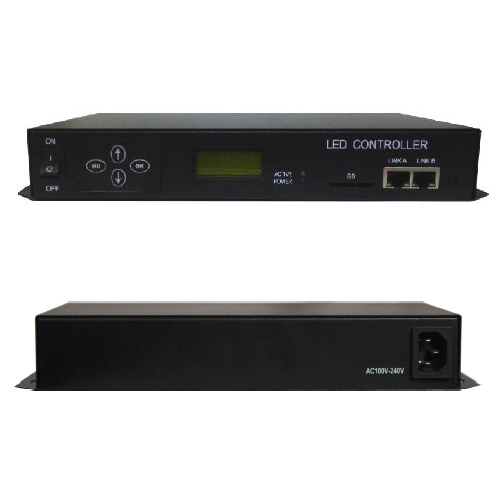Building management systems are used to control different building systems such as the heating, solar screening equipment, and the lighting. They are more complex than systems that solely control the lighting and thus are more involved in terms of planning, installation and operation. An established protocol ensures communication between the systems over a flexible network. The control systems form the basis for building automation, to simplify and automate the different functions in a building. The building automation is divided into three levels: the management level for user-friendly visualisation, the automation level for data exchange, and the local level with sensors and actuators. There are no integrated receiving devices in the luminaires (interfaces) for decoding control signals; lighting control is achieved by wiring individual circuits.
Konnex (KNX), known through the European Installation Bus (EIB), is a standardized digital control system which controls not only the lighting but also other systems such as heating, ventilation and solar screening equipment. KNX is suitable as a network of electronic installations for building automation. Remote monitoring and control make it easy to use. The data is transmitted over a separate 24V control line- twisted pair wire at a rate of 9.6 Kbits/s. The decentralised communication is bidirectional so that the receiver can also provide feedback. Each bus device can transmit independently. An allocation of priorities ensures proper communication and prevents data collisions. Due to the individual addresses of the sensors and actuators, this allocation is flexible and can easily be changed. KNX is used in domestic buildings and in large installations such as offices or airports.
Local Operating Network (LON) is a standardized digital control protocol which controls building systems and is also used in industrial and process automation. Via TCP/IP, LON networks can be combined to form cross-region networks and be remote-controlled. LON is based on intelligent sensors and actuators. The microprocessor of each LON node, called a “neuron”, can be programmed and configured. The data transfer for up to 32,000 nodes is over a twisted pair wire, as a separate control line, at a rate of up to 1.25 Mbit/s.
Lighting systems can be programmed with software to provide great flexibility and allow an adjustment of the lighting to individual requirements. This results in complex lighting systems with sensors and interfaces that often require professional installation and maintenance. Users require simple day-to-day operation that allows them to make changes themselves.
Non-standard systems can include a great deal of complexity to cater for special building requirements. Problems or changes, however, may require the support of a professional programmer. So, standardized lighting systems that allow certain parameters to be changed are easier to operate and enable lighting designers or users to make the necessary changes.
The decision on the type of lighting control system and software depends on technical aspects such as the size of the lighting system, its integration with AV technology or building control systems, and the complexity of the installation. Further criteria for the user to consider are ergonomics, flexibility, and maintenance. A simple installation process, rapid familiarisation and easy to use software aid setup and operation.

